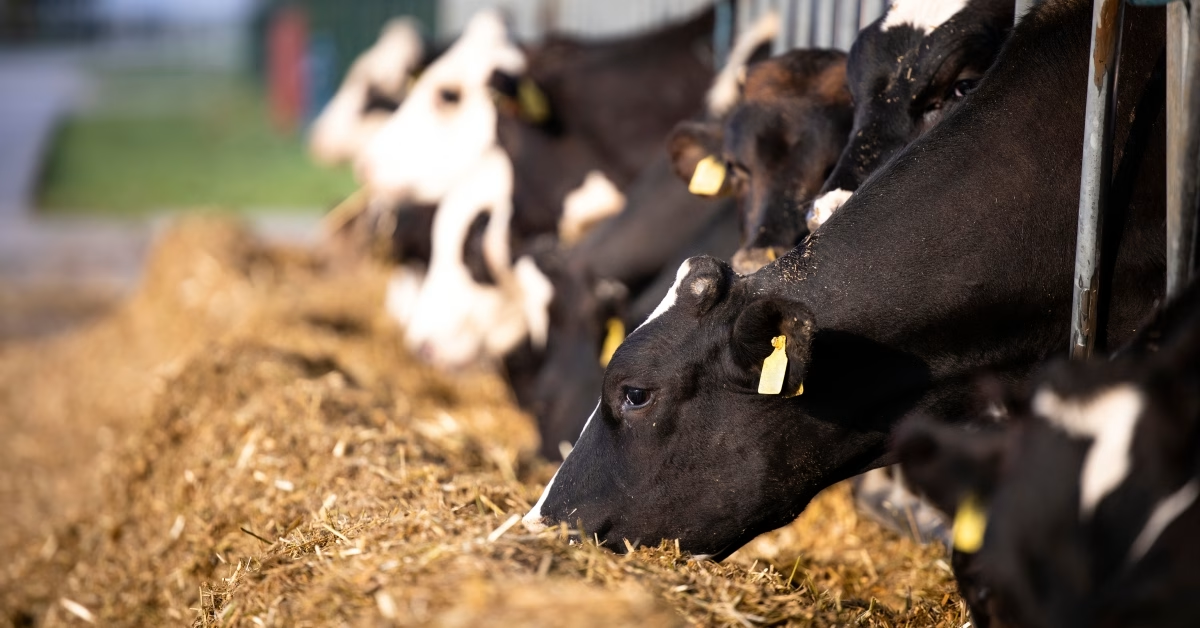Why are UK dairy farmers shutting down in record numbers? What alarming trends are driving this shift? Read on to discover the surprising data and insights.
Summary: British dairy producers are exiting the industry at unprecedented rates, with numbers dropping by 5.8% from April 2023 to April 2024, according to an AHDB survey. This decline is due to fluctuating milk prices, high input costs, adverse weather conditions, and increased regulatory pressures. Despite the reduction in producer numbers, average milk production per farm is rising, indicating industry consolidation rather than a new trend. The North West and North of England are the most affected regions. Increasing input costs, such as a 3.5% rise in gasoline expenses, and regulatory constraints add to the challenges. Land values have also surged, with England seeing a 4% average increase in 2023, while Wales experienced a 23% rise. Despite these hurdles, yearly milk output has steadily increased due to enhanced efficiency per cow, suggesting that the future holds potential for new entrants and further efficiency improvements across the supply chain.
- British dairy farmers have seen a 5.8% decline in numbers from the previous year.
- Key regions affected are the North West and North of England.
- Milk price fluctuations and rising input costs are major factors driving farmers out of the industry.
- Fuel costs have increased by 3.5% year on year.
- Land values rose by an average of 4% in England and 23% in Wales in 2023.
- Despite a decline in producers, annual milk production has increased due to enhanced efficiency per cow.
- The industry faces increasing regulatory pressures, such as environmental rules and nitrate management.
- There is potential for new entrants, but consolidation trends are likely to continue.
- Efforts to improve supply chain efficiency will be crucial for the future of British dairy.

Did you know British dairy farmers are leaving the sector in historic numbers? In April 2024, the UK had around 7,130 active dairy farmers, a 5.8% decrease from the previous year. This trend is more than simply a blip; it is a troubling sign of deeper concerns. Are growing expenses, changing milk prices, and regulatory constraints straining farmers to the breaking point? Let’s look at the elements behind this migration and what it implies for the future of British dairy production.
Who: British dairy producers.
What: A significant decline in the number of dairy producers.
When: Between April 2023 and April 2024.
Where: Across the UK, the North West and the North of England are the most affected regions.
Why: Multiple reasons contribute to lower milk prices relative to 2022 peaks, including cull cow prices, ongoing inflation on crucial inputs, higher interest rates, unfavorable weather conditions, regulatory constraints, and succession concerns.
How: According to the most recent AHDB survey, the number of producers decreased by 5.8%, from about 7,570 in April 2023 to 7,130 in April 2024.
| Region | Producers Lost (Apr 2023 – Apr 2024) | Total Producers (Apr 2024) |
|---|---|---|
| North West | 39 | 1,040 |
| North of England | 22 | 650 |
| Midlands | 16 | 800 |
| Mid West (Devon, Somerset, Wiltshire) | 13 | 620 |
| Scotland | 50 | 850 |
| Wales | 40 | 530 |
| England (All Other Regions) | 260 | 1,440 |
| Overall | 440 | 7,130 |
Behind the Exodus: Why Are British Dairy Farmers Calling It Quits?
Understanding why British dairy farmers are quitting the sector requires an examination of individual variables contributing to the trend.
Milk prices have fluctuated significantly, directly affecting farm profitability. According to Freya Shuttleworth, an AHDB senior economist, “Although milk prices are historically higher, they have dropped off substantially from their peaks in 2022.” In June 2024, the average UK farmgate milk price was 38.43ppl, a significant fall from the maximum price paid in 2022 of 13.08ppl [Defra]. This variation has reduced profitability, prompting some farmers to discontinue dairy production.
Input costs have also significantly influenced the situation. Despite stabilized fertilizer prices since mid-2023, gasoline expenses have risen by 3.5% per year. This increase adds to the economic stress on farmers already dealing with tight profit margins as milk prices fall. Furthermore, inflationary pressures on feed and energy inputs worsen the problems.
Land values are another intricate problem. According to Savills’ 2024 Farmland Market study, land prices in England increased by an average of 4% in 2023, with robust availability in the north. In contrast, land prices in Wales significantly increased by 23%, marking the most significant trade activity in 23 years. Such variations in land value cause discrepancies in operational expenses, impacting farmers’ choices on whether to stay or leave the sector.
Weather conditions have also not been beneficial. Shuttleworth continued: “This coincided with some of the wettest weather on record, interrupting forage production.” Due to delayed spring turns, the requirement to house cattle earlier than usual has placed extra strain on fodder and bedding sources, raising operating expenses even higher.
The falling milk prices, increased input costs, fluctuating land values, and bad weather conditions created a challenging environment for British dairy producers. As farmers seek profitability and sustainability, these issues have led some to reevaluate their industry stance.
The Resilient Rise: Unpacking the Paradox of Increased Milk Production Amidst Industry Decline
The British dairy business has seen considerable changes during the last three decades. Producer numbers have fallen by around 70%, indicating a solid consolidation tendency in the industry. Cow numbers have decreased by around 28% since the mid-1990s, which is also noteworthy. Despite these decreases, yearly milk output has steadily increased. This paradox is linked to the persistent quest for improved efficiency per cow, which allows farmers to maintain or even increase total milk production while using fewer resources. Modernization and intentional improvements in agricultural operations have permitted this steady but continuous increase in productivity, ensuring that milk output stays stable despite industry-wide changes.
The Road Ahead: Can British Dairy Bounce Back?
So, what does the future hold for British dairy, and how likely are producer numbers to rebound?
Shuttleworth said, “There is always room for new blood to come in, which should be encouraged.”However, the current consolidation trend is expected to continue.
“Despite dropping producer numbers, the dairy herd remains generally steady yearly. Although there has been a long-term drop in dairy cow numbers, the sector has worked hard to enhance productivity, with average yields per cow increasing and national milk production volumes remaining largely steady.
“The 2023/24 milk season finished with GB quantities down just 1.6% from the 2015/16 season, our early record, contrasted to an 11.5% drop in the milking herd at this period [January 2016 versus January 2024, ed.].
The researcher concluded that environmental rules would drive the business to improve efficiency across the whole supply chain, from farm to shelf.
The Bottom Line
The British dairy business is in upheaval, with a significant decline in active farmers. Despite historically high milk prices, the reduction has been caused chiefly by inflationary pressures, rising input costs, and regulatory constraints. Surprisingly, even when producer numbers decline, total milk output continues to climb due to increased cow efficiency. This contradiction highlights a pattern of consolidation rather than a complete deterioration in the sector’s viability.
As we look to the future, we must contemplate the ramifications of this transformation. What does this imply for the future generation of dairy farmers? How can we encourage fresh blood to join the industry? Policies that promote financial stability and predictability for producers are urgently needed, enabling them to handle market volatility and regulatory hurdles efficiently. Furthermore, supporting local dairy farmers is more important than ever, providing them with the resources they need to succeed in the face of these changes.
With a significant focus on environmental rules and efficiency gains, the business offers opportunities for those willing to adapt and develop, yet both demand changes. The government and industry levels are designed to support long-term growth and resilience. As consumers, stakeholders, and politicians, we can work together to ensure British dairy farming has a bright and sustainable future.













